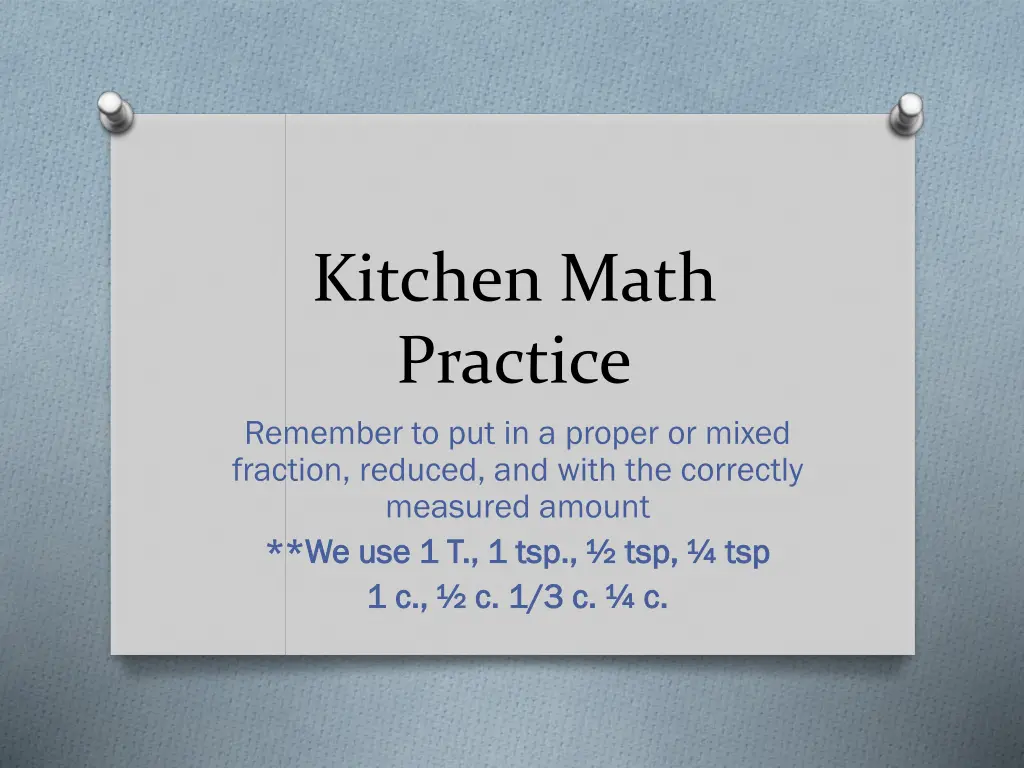
Kitchen Math Tips for Proper Ingredient Measurement
Discover helpful kitchen math tips for converting measurements to proper or mixed fractions, reducing them, and using the correct amounts like 1 T, 1 tsp, and more. Also, learn about the impact of doubling or halving recipes on ingredients, cooking time, and pan size.
Download Presentation

Please find below an Image/Link to download the presentation.
The content on the website is provided AS IS for your information and personal use only. It may not be sold, licensed, or shared on other websites without obtaining consent from the author. If you encounter any issues during the download, it is possible that the publisher has removed the file from their server.
You are allowed to download the files provided on this website for personal or commercial use, subject to the condition that they are used lawfully. All files are the property of their respective owners.
The content on the website is provided AS IS for your information and personal use only. It may not be sold, licensed, or shared on other websites without obtaining consent from the author.
E N D
Presentation Transcript
Kitchen Math Practice Remember to put in a proper or mixed fraction, reduced, and with the correctly measured amount **We use 1 T., 1 tsp., **We use 1 T., 1 tsp., tsp 1 c., c. 1/3 c. c. 1 c., c. 1/3 c. c. tsp, , tsp tsp
Food Fact OWhenever you double or halve a Whenever you double or halve a recipe, the temperature of the recipe, the temperature of the oven does NOT change. oven does NOT change. However, the amount of However, the amount of ingredients, cooking time and ingredients, cooking time and size of the pan will be affected. size of the pan will be affected.
Cut in half: c.
Cut in half: 2/3 c.
Cut in half: 1 c.
Cut in half: 3 c.
Cut in half: 1 T.
Cut in half: tsp.
Cut in half: c.
Double: c.
Double: 1/8 tsp.
Double: 1 1/3 c.
Double: 2 c.
Double: 1 tsp.
Double: tsp.
Double: 2 tsp.
